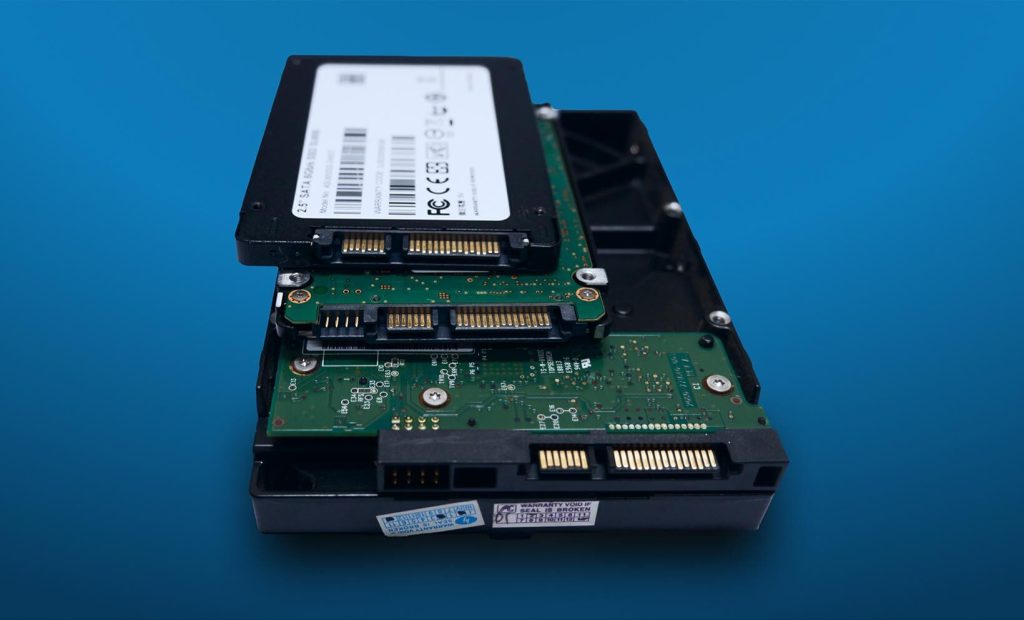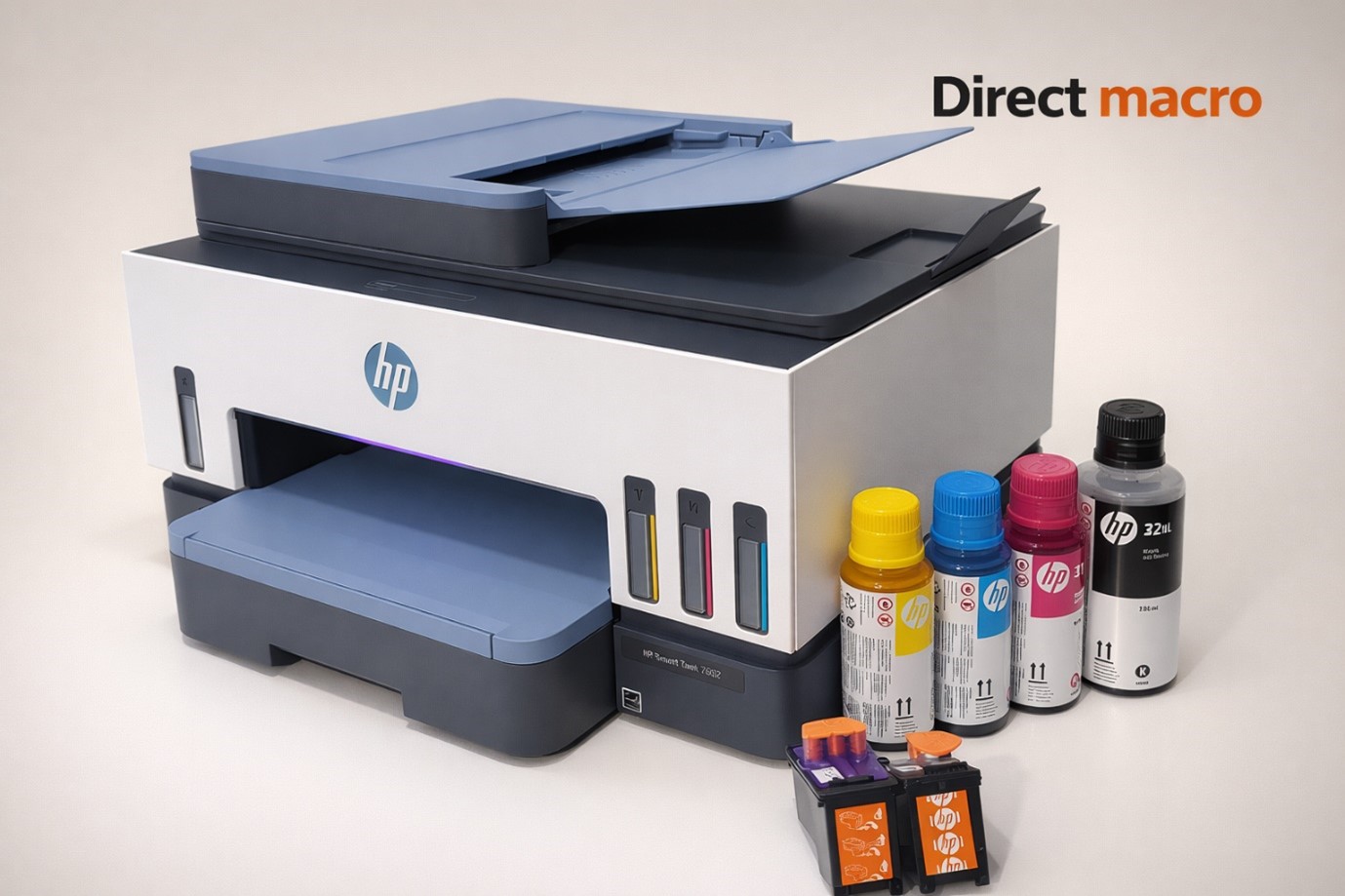How to Build a Server in 2026: Step-by-Step Instructions
Do you remember when building a home PC was the coolest thing in the neighborhood? Deciding which hard drive to choose and ensuring your CPU was compatible with your budget motherboard were part of the excitement. Those memories of the 80s and 90s bring a wave of nostalgia for many tech enthusiasts. However, the 90s also marked the beginning of a digital revolution that transformed our interaction with technology.
One significant milestone was the development of the very first web server, CERN httpd, created by Tim Berners-Lee at CERN in Switzerland in 1990. This server, which stands for Hypertext Transfer Protocol daemon, laid the foundation for the World Wide Web as we know it today. Since then, server technology has evolved dramatically, becoming an integral part of our digital lives, powering everything from simple websites to complex cloud infrastructures.
Today, building your own server system is not just a nostalgic endeavor but a practical and rewarding project. Whether you’re setting up a server for personal use, gaming, media streaming, or running a small business, having your own server provides full control, customization, and performance optimization. With advancements in hardware and software, building a server in 2026 is more accessible and beneficial than ever before.
In this step-by-step guide, we will walk you through the entire process of building a server, from planning and choosing the right components to assembly and configuration.
What is a Server?
A server is a powerful computer designed to manage network resources and provide services to other computers. Servers can host websites, store files, run applications, and more. They are optimized for reliability, efficiency, and scalability.
Planning Your Server Build
Building a server involves a series of important steps that require careful planning and decision-making. Here’s a step-by-step process on how to build a server:
Define Your Purpose
The first and most crucial step in building a server is to determine its primary use. The purpose of your server will significantly influence your choice of hardware and software. Here are some common types of servers and their purposes:
-
Web Server:
- Hosts websites and handles HTTP requests.
- Requires reliable uptime and the ability to handle web traffic efficiently.
- Common software includes Apache, Nginx, and Microsoft IIS.
-
Media Server:
- Stores and streams media files (videos, music, photos) to multiple devices.
- Needs large storage capacity and good read/write speeds.
- Popular software includes Plex, Emby, and Jellyfin.
-
Gaming Server:
- Hosts multiplayer games and handles game sessions.
- Requires low latency, high processing power, and substantial RAM.
- Examples include Minecraft, ARK: Survival Evolved, and other dedicated game servers.
-
File Server:
- Manages and provides access to files across a network.
- Requires secure storage solutions and efficient file management.
- Uses protocols like FTP, SFTP, or SMB.
-
Database Server:
- Stores and manages databases, handling data queries and transactions.
- Needs high RAM and processing power, as well as fast storage.
- Common databases include MySQL, PostgreSQL, and MongoDB.
-
NAS Server:
- Network Attached Storage for centralized data storage and access.
- Focuses on redundancy and data protection, often using RAID configurations.
- Popular options include FreeNAS/TrueNAS.
-
Cloud Server:
- Virtual servers hosted on the cloud, providing scalable resources.
- Requires robust virtualization software and high network bandwidth.
- Platforms include VMware, OpenStack, and cloud services like AWS and Azure.
-
Proxy Server:
- Acts as an intermediary for requests from clients seeking resources from other servers.
- Enhances security, anonymity, and can cache content.
- Examples include Squid, HAProxy, and Nginx.
-
VPN Server:
- Provides secure, encrypted connections over the internet to a private network.
- Requires robust encryption protocols and high network reliability.
- Common software includes OpenVPN, WireGuard, and SoftEther.
Set a Budget
The server building cost can vary significantly based on the components and the server’s purpose. Here are some typical costs based on the data you provided:
| Components | Model Description | Price Tag |
|---|---|---|
| CPU | Intel Xeon E-2236 6-Core, AMD Ryzen 9 5950X, Intel Xeon Gold 6238T | $350, $700, $2800 |
| Memory (RAM) | 64GB (2 x 32GB) DDR4 ECC Registered RAM | $150 |
| Storage | 2 x 1TB NVMe SSD (RAID configurable), 2 x 4TB HDD (RAID configurable) | $280 (total), $150 (total) |
| Motherboard | SuperMicro X11SCA-F | $375 |
| Network Interface | Onboard Gigabit NIC | $0 |
| Optional NIC | 10-Gigabit NIC | $90 |
| Power Supply Unit | 650W 80 PLUS Gold | $100 |
| Cooling Solutions | Aftermarket Liquid Cooler | $70-200 |
| Chassis/Case | Mid-Tower Server Chassis | $120 |
| Optional GPU | Basic GPU | $50-100 |
| Operating System | Ubuntu Server, Windows Server 2022 Standard (varies by licensing) | $0, $1069 |
| Other Software | Free or open-source versions, additional costs may apply | Varies (potentially free) |
Highly Considerable Components Models
Based on your requirements and the latest recommendations, here are some top, highly considerable component models with their approximate price tags:
CPUs:
- Intel Xeon E-2236 6-Core: $350
- AMD Ryzen 9 5950X: $700 (Best for high performance with multi-core tasks)
- Intel Xeon Gold 6238T: $2,800 (Best for enterprise-level workloads)
Memory (RAM):
- 64GB (2 x 32GB) DDR4 ECC Registered RAM: $150
Storage:
Motherboard:
- SuperMicro X11SCA-F: $375
Network Interface Card (NIC):
- Onboard Gigabit NIC: $0
- 10-Gigabit NIC: $90
Power Supply Unit (PSU):
- 650W 80 PLUS Gold: $100
Cooling Solutions:
- Aftermarket Liquid Cooler: $70-200
Chassis/Case:
- Mid-Tower Server Chassis: $120
Optional Graphics Card (GPU):
- Basic GPU: $50-100
Operating System (OS):
- Ubuntu Server: $0
- Windows Server 2022 Standard: $1069
Assembling Your Server
Building a server requires careful attention to detail and proper handling of components to ensure everything functions correctly. Here’s a comprehensive, step-by-step guide to assembling your server:
Preparation
-
Gather All Necessary Tools and Components:
- Tools: Screwdrivers (typically Phillips head), anti-static wrist strap, thermal paste (if not pre-applied), cable ties.
- Components: CPU, motherboard, RAM, storage drives (HDD/SSD), power supply unit (PSU), cooling solutions (fans/liquid coolers), chassis/case, network interface card (NIC) if needed.
- Ensure all components are compatible with each other.
-
Create a Clean, Static-Free Workspace:
- Work on a large, clean, and static-free surface.
- Use an anti-static mat and wear an anti-static wrist strap to prevent static electricity from damaging sensitive components.
Step-by-Step Assembly
-
Install the CPU:
- Locate the CPU socket on the motherboard and lift the retention arm.
- Align the CPU with the socket (note the orientation markers) and gently place it into the socket.
- Lower the retention arm to secure the CPU in place.
-
Mount the Motherboard:
- Install the motherboard standoffs in the case if not pre-installed.
- Align the motherboard with the standoffs and screw it into place.
- Ensure all rear I/O ports align with the case’s back panel.
-
Insert RAM:
- Open the RAM slot clips on the motherboard.
- Align the notch on the RAM module with the slot and press down firmly until the clips snap back into place.
- Repeat for additional RAM modules, ensuring they are placed in the correct slots for dual/triple/quad-channel configuration.
-
Connect Storage Drives:
- Mount the SSDs and HDDs in the appropriate drive bays in the case.
- Connect the SATA or NVMe connectors to the drives and the motherboard.
- Secure the drives in place with screws if necessary.
-
Install the PSU:
- Place the PSU in the designated area of the case (typically at the bottom or top rear).
- Secure the PSU with screws.
- Connect the main power cables (24-pin ATX, 8-pin CPU, etc.) to the motherboard.
-
Cable Management:
- Route cables through the case’s cable management grommets and channels.
- Use cable ties to secure and organize cables to ensure good airflow and a clean build.
- Ensure no cables obstruct fans or other components.
-
Cooling Solutions:
- Install the CPU cooler (air or liquid). For air coolers, apply thermal paste if necessary and secure the cooler to the motherboard. For liquid coolers, mount the radiator and fans in the case, and connect the pump to the CPU.
- Install case fans in appropriate locations (intake at the front/bottom, exhaust at the top/rear) to ensure optimal airflow.
Installing the Operating System
-
Choosing an OS:
- Select an operating system based on your server’s purpose. Popular options include various Linux distributions (e.g., Ubuntu Server, CentOS) and Windows Server. Linux is often preferred for its stability, security, and cost-effectiveness, while Windows Server offers ease of use and compatibility with Microsoft applications.
-
Installation Guide:
- Create Bootable Media: Use a USB drive or DVD to create bootable installation media for your chosen OS. Tools like Rufus or the built-in media creation tools can help.
- Configure BIOS/UEFI Settings: Ensure your server is set to boot from the installation media. Access BIOS/UEFI settings during startup (typically by pressing Delete, F2, or another key specified by the motherboard manufacturer).
- Install the OS: Insert the bootable media and follow the on-screen instructions to install the operating system. Partition the drives as needed and install the OS on the primary SSD.
- Initial Configuration: Set up the administrator account, configure network settings, and apply updates and patches to ensure the server is secure and up-to-date.
Configuring Your Server
-
Network Configuration:
- Set a static IP address for your server to ensure consistent network access.
- Configure DNS settings to enable proper name resolution.
- Use tools like ifconfig (Linux) or network settings (Windows) to configure network parameters.
-
User Management:
- Create user accounts and set appropriate permissions. Use role-based access control to enhance security.
- Implement user policies to ensure only authorized personnel can access sensitive data and resources.
For a more detailed understanding of network configuration, including step-by-step guides and additional tips, check out this network configuration guide.
-
Security Settings:
- Implement firewalls (e.g., iptables for Linux, Windows Firewall) to protect your server from unauthorized access.
- Enable SSL/TLS for secure communications. Obtain and install SSL certificates for web servers.
- Regularly update software and firmware to protect against vulnerabilities. Use tools like unattended-upgrades (Linux) or Windows Update.
Installing and Configuring Server Software
-
Web Server Software:
- Install and configure web server software like Apache, Nginx, or Microsoft IIS. Use package managers (e.g., apt, yum) or download from official sources.
- Set up virtual hosts and SSL certificates for secure web traffic. Configure httpd.conf (Apache) or nginx.conf (Nginx) files.
-
Database Management Systems (DBMS):
- Install database software such as MySQL, PostgreSQL, or MongoDB. Use package managers or download installation packages.
- Configure databases, users, and access controls to ensure data security and performance. Use SQL commands or graphical tools like phpMyAdmin.
-
File Sharing Services:
- Set up file sharing protocols like FTP, SFTP, or SMB. Install software like vsftpd, ProFTPD, or Samba.
- Configure shared folders, permissions, and access controls in configuration files (e.g., vsftpd.conf, smb.conf).
-
Email Server Setup:
- Install and configure email server software such as Postfix, Dovecot, or Microsoft Exchange.
- Manage email domains, user accounts, and security settings. Configure main.cf (Postfix) or use Exchange Management Console.
Testing and Optimization
-
Performance Testing:
- Use benchmarking tools like stress, sysbench, or iperf to test server performance under various loads.
- Analyze results to identify bottlenecks and areas for improvement. Monitor CPU, memory, disk, and network usage.
-
Optimization Tips:
- Optimize system parameters for better performance. Adjust settings in /etc/sysctl.conf (Linux) or use Performance Monitor (Windows).
- Implement caching solutions (e.g., Varnish, Memcached) to reduce latency and improve response times.
-
Regular Maintenance:
- Develop a maintenance schedule that includes regular backups, system updates, and performance monitoring.
- Use automated tools (e.g., cron jobs, Windows Task Scheduler) to streamline these tasks.
Troubleshooting Common Issues
-
Hardware Issues:
- Diagnose and resolve hardware problems such as faulty components or overheating. Use tools like lshw, hwinfo, or BIOS diagnostics.
- Keep spare parts on hand to minimize downtime. Replace faulty components promptly.
-
Software Issues:
- Troubleshoot OS-related issues, application errors, and configuration problems. Use logs (/var/log in Linux, Event Viewer in Windows) to identify issues.
- Keep detailed logs to help identify and resolve recurring issues.
Advanced Server Configurations
-
Virtualization:
- Set up virtual machines using Hyper-V, VMware, or KVM. Virtualization allows you to run multiple isolated environments on a single physical server.
- Configure virtual networks, storage, and compute resources to optimize performance and resource allocation.
-
Containerization:
- Use Docker and Kubernetes to manage containerized applications. Containers provide lightweight, portable, and consistent runtime environments.
- Deploy, scale, and manage containers using orchestration tools like Kubernetes.
-
High Availability and Load Balancing:
- Implement failover strategies and load balancers to ensure server reliability and performance. Use tools like HAProxy or NGINX to distribute traffic evenly across multiple servers.
- Configure clustering and redundancy to minimize downtime and ensure continuous availability.
FAQs
How to Build a Server at Home?
Building a home server involves several detailed procedures. Begin by determining the specific function of the server, such as media streaming, file storage (NAS), web hosting, game hosting, VPN services, or backup storage. Select suitable hardware components, such as a high-performance CPU (Intel Xeon or AMD Ryzen), a minimum of 16GB of RAM, and a combination of SSDs for the operating system and HDDs for storing large amounts of data. Arrange the physical components within a casing that provides efficient circulation of air. Utilize a bootable USB drive to install a server-specific operating system such as Ubuntu Server, FreeNAS, or OpenMediaVault. Configure the network settings by assigning a static IP address, implement security measures such as firewalls, and establish user accounts. Lastly, proceed to install the required server software such as Plex, Apache, and OpenVPN. Ensure the server’s security by implementing passwords and performing frequent upgrades. Supervise and modify settings to optimize performance as necessary.
How to Build a Server for Gaming?
To build a high-performance gaming server with low latency, follow these steps:
- Start with powerful hardware, such as an AMD Ryzen 9 5950X or Intel Core i9 CPU, with at least 32GB of DDR4 RAM and SSDs for storage. Make sure to build it in a well-cooled case.
- Install an operating system, preferably Ubuntu Server or Windows Server.
- Optimize the network for low latency by using gigabit or 10-gigabit NICs.
- Install the game server software for your specific games, like SteamCMD for Steam games, or the official server software for other games, such as Minecraft.
- Install remote administration software like TeamViewer and set up port forwarding and Dynamic DNS on your router.
How Much Does It Cost to Build a Server?
The cost of building a server varies based on its purpose and the quality of components. For a basic home server, the cost can range from $500 to $1,000. This includes a mid-range CPU (around $200), 16GB of RAM ($70), a 500GB SSD ($60), and a basic motherboard ($100). For more demanding tasks like gaming or virtualization, costs can increase significantly. A high-end gaming server or enterprise-level server can cost between $2,000 and $5,000. This would include a high-performance CPU (around $500-$1,000), 32GB or more of RAM ($150-$300), multiple SSDs in RAID configuration ($300-$600), and a robust motherboard with advanced features ($300-$500). Additional costs include power supplies, cooling solutions, and software licenses.
How to Build a Media Server?
When building up a media server, paying attention to storage and streaming considerations is important. First, select a processor such as the Intel Core i5 or AMD Ryzen 5, which can handle multiple high-definition streams. Having at least 16GB of RAM is recommended to minimize interruptions. Regarding storage, it’s crucial to use a combination of SSDs for the operating system and applications and HDDs with more than 4TB for media storage. Choose a case that allows for multiple drive bays and good ventilation. Consider using a server OS like Ubuntu or Windows for the operating system. Next, select media server software such as Plex, Emby, or Jellyfin, all capable of transcoding and streaming video to various platforms. Ensure the network is appropriately set up for continuous, stable, fast connections – a gigabit Ethernet or better is recommended. Finally, set up user accounts and permissions and organize your media library for easy access and streaming.
How to Build a NAS Server?
A Network Attached Storage (NAS) server is designed for centralized file storage and access. Start with a motherboard that supports multiple SATA ports for connecting multiple drives. Choose a CPU like the Intel Pentium or AMD Athlon, which are cost-effective and sufficient for NAS tasks. Install at least 8GB of ECC RAM to ensure data integrity. Use multiple HDDs (minimum 4TB each) in a RAID configuration for redundancy and performance. FreeNAS (now TrueNAS) is a popular operating system for NAS servers, providing a user-friendly interface and robust features. Install the OS on a small SSD or USB drive. Configure the RAID setup and create shared folders with appropriate permissions. Implement security measures like network segmentation and regular backups. Regularly monitor the health of your drives to prevent data loss.
How to Build a Cloud Server?
Building a cloud server involves setting up a virtualized environment that can dynamically allocate resources. Start with a powerful multi-core CPU like the AMD EPYC or Intel Xeon, capable of handling virtualization tasks. Install at least 32GB of RAM, though more is recommended for extensive cloud operations. Use SSDs for storage to ensure fast data access. Install a robust server operating system such as Ubuntu Server or CentOS, and use virtualization software like VMware ESXi, Proxmox, or OpenStack. Configure the network with a static IP address and secure it with firewalls and VPNs. Set up virtual machines (VMs) according to your needs, allocating appropriate resources to each. Implement cloud management tools to monitor performance and automate tasks.
How to Build a Web Server?
Building a web server involves hardware capable of handling web traffic and software that serves web pages efficiently. Choose a multi-core CPU like the Intel Core i7 or AMD Ryzen 7, with at least 16GB of RAM. Use SSDs for storage to ensure fast access times. A motherboard with sufficient expansion slots and a reliable power supply are also necessary. Install a server operating system. For web server software, Apache and Nginx are popular choices. Configure virtual hosts to handle multiple websites on a single server. Secure the server with SSL/TLS certificates and configure a firewall to protect against unauthorized access.
How to Build a Proxy Server?
Building a proxy server involves setting up hardware and software to act as an intermediary between clients and other servers. Use a CPU like the Intel Pentium or AMD Ryzen 3, which are sufficient for handling proxy tasks. Install at least 8GB of RAM. Use an SSD for faster data access. Install a server operating system, such as CentOS. Squid is a popular open-source proxy server software that supports various proxy functions. Configure the proxy settings, including cache directories, access controls, and logging. Implement security measures, such as IP whitelisting and SSL/TLS encryption for secure communications.
How to Build a VPN Server?
Building a VPN server requires selecting appropriate hardware and configuring secure software. Start with a multi-core CPU like Intel Core i5 or AMD Ryzen 5, at least 16GB of RAM, and SSDs for fast data processing. Install a server OS such as Ubuntu Server or Windows Server. Use VPN software like OpenVPN or WireGuard, known for their security and speed. Configure encryption protocols, assign a static IP, and set up firewall rules to protect the VPN connections. Additionally, configure port forwarding and Dynamic DNS if needed for consistent remote access.
Do you need advice on buying or selling hardware? Fill out the form and we will return.

Sales & Support
(855) 483-7810
We respond within 48 hours on all weekdays
Opening hours
Monday to thursday: 08.30-16.30
Friday: 08.30-15.30









